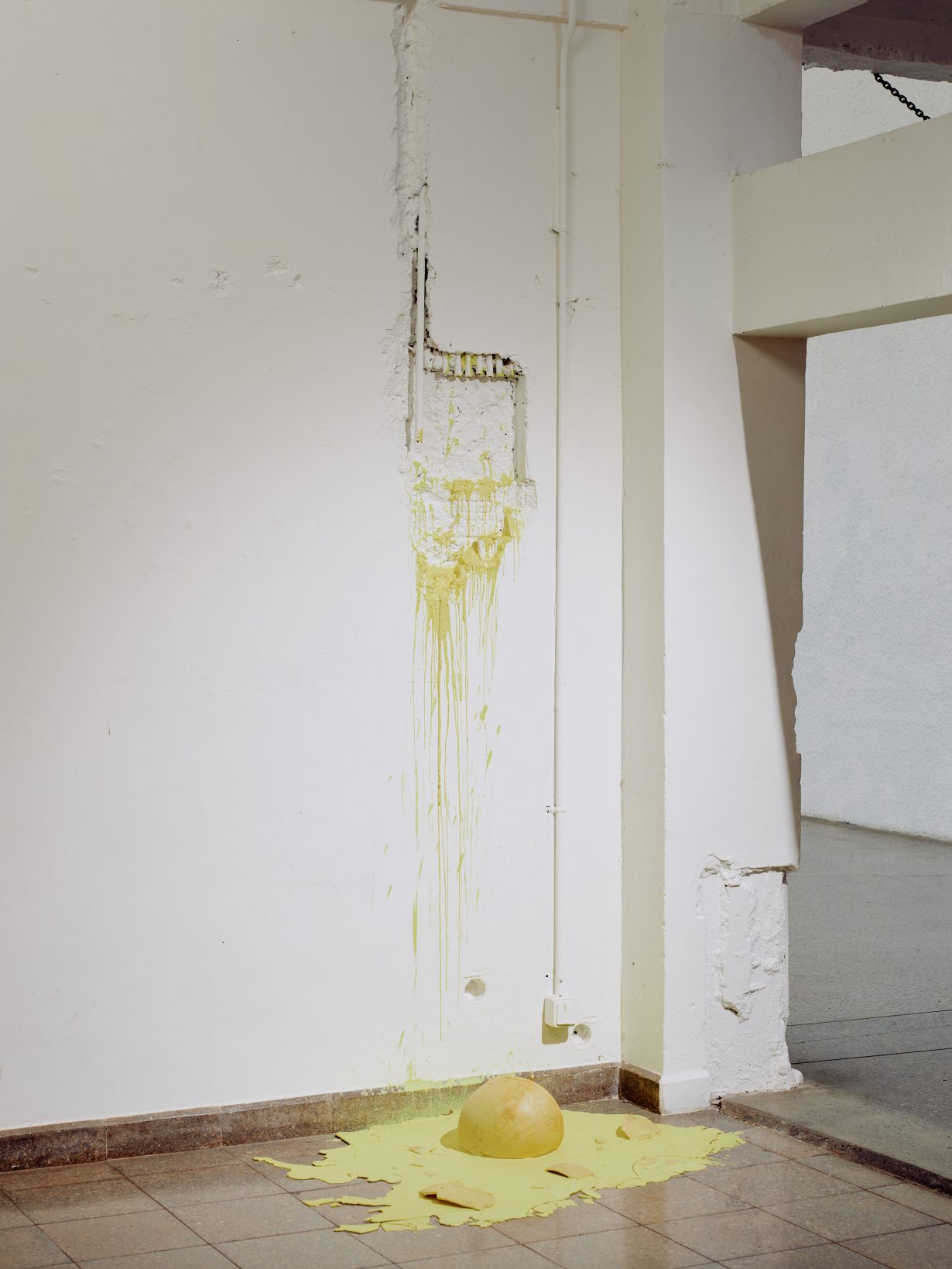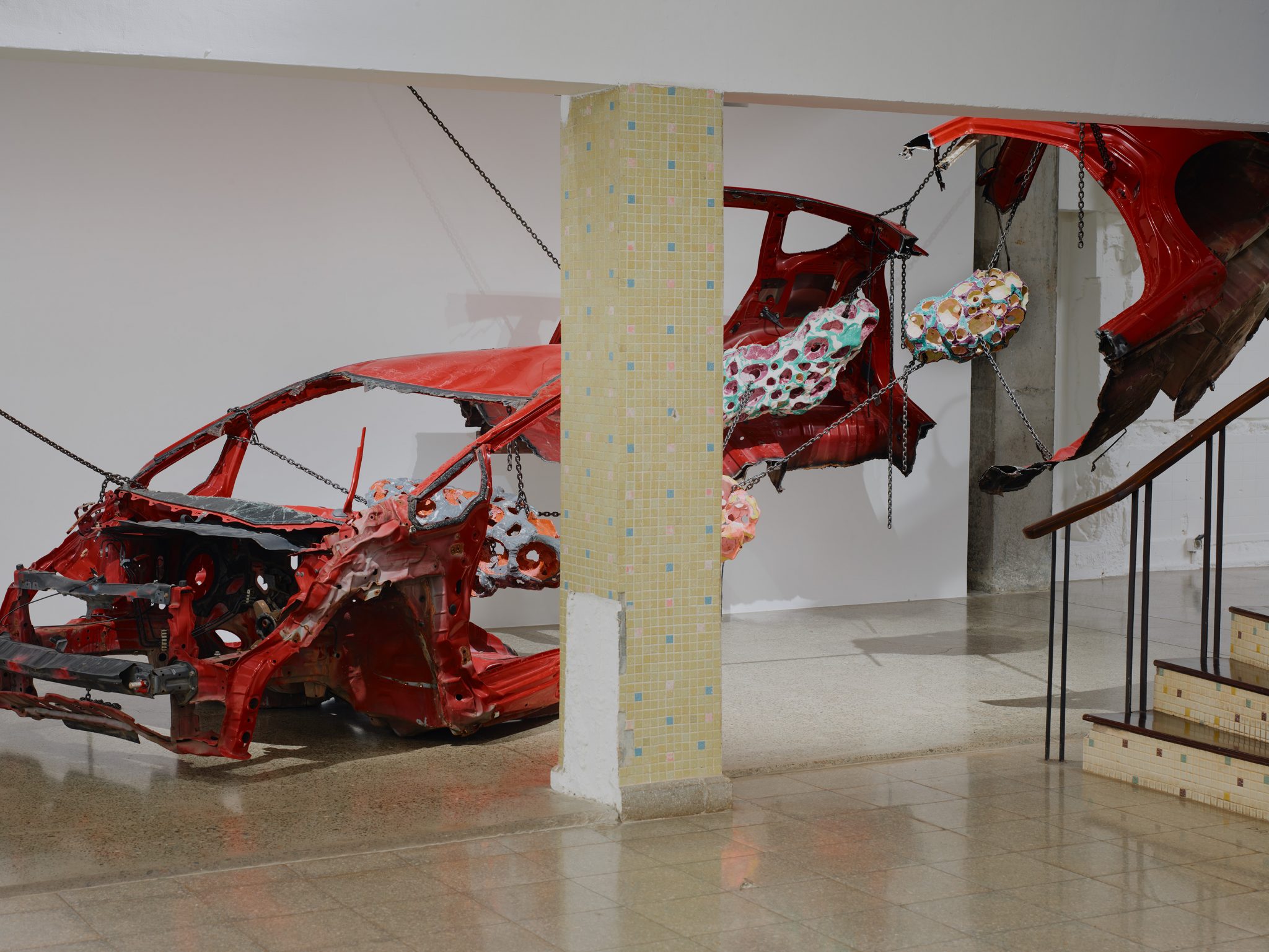Kawah Ojol at ROH Projects, Jakarta finds something volcanic in contemporary Indonesian life
During a residency in Indonesia, South Korean artist Hyun Nahm visited various volcanoes, including Kawah Ijen in East Java, which is known for its dangerous and backbreaking sulphur-mining operations. To harvest the ‘Devil’s Gold’ (solidified sulphur) from inside the crater, workers have to make an arduous journey up to the rim and then another three kilometres down the steep mountain, braving toxic fumes with little protection, all while carrying the boulderlike chunks, for which they are paid by weight. Something of that heated, treacherous experience manifests itself in the 12 installations on show here. Many have a ruined, postapocalyptic quality: featuring materials that are melted, corroded and/or vandalised, they appear like relics of some terrible disaster. And present in (or, more precisely, poured over) many of the works is sulphur, which the artist says in the supporting literature is a shorthand for the vulnerability of the people who work in that dangerous and toxic environment, a precarity he then extends to include other types of labour in Indonesia.
Overall, I enjoyed the material investigations on show. These extend the artist’s ongoing experiments with industrial materials such as epoxy and polystyrene to create sculptures that look simultaneously natural and synthetic, familiar and strange. As for the show’s gestures towards social commentary, I found the analogy between the extractive patterns of mining operations and the exploitation of low-wage gig workers slightly repetitive, as well as relying too much on the viewer bringing a certain amount of contextual knowledge to the show.

Sulphur sourced from a local shop appears in a number of bleak installations that explore aspects of Indonesia’s politics and economy. But these references might well be lost without recourse to and elucidation from the exhibition handout. Erupted (all works 2024) features a burnt barricade, which looks like a regular orange roadblock, but half-melted and splattered with sulphur. According to the label, this misshapen barricade is actually a leftover from the ‘Omnibus law’ protests, which took place in 2020 when a controversial economy-boosting jobs law was introduced. People took to the streets, setting fire to property and overturning police cars, because they said the new measure undermined labour rights and harmed the environment. Next to this work is Faults, which is a large Pikachu mascot-hat lying on its side on the floor, again covered in solidified sulphur. The supplementary text informs that this outfit is usually worn by roadside buskers to entertain passersby and motorists for spare change. Inside the empty cavity of the head are slanted rods rising from the ground, resembling the growth of an aggressive plant species.
Less grim and calamitous, and more intriguing and self-explanatory, is another installation that explores the architectural landscape of Indonesia. Adhan, named after the Muslim call to prayer, is a series of photographs, each of which depicts a BTS (base transceiver station) tower together with a minaret from a mosque. The series juxtaposes these two important facets of city skylines in the country, and the spiritual and electronic transmissions these structures put out. Nearby, three sculptures titled Iram synthesise the forms of the BTS tower and religious architecture into new spindly, delicate-looking sculptures that are made from materials such as black iron-powder held together by superglue. Compelling and mysterious, they evoke both natural and manmade forms, being reminiscent of fulgurite shards, or fused mineral grains that result from lightning striking the ground, as well as futuristic, bio-organic buildings for nonhuman lifeforms.
Kawah Ojol at ROH Projects, Jakarta, through 5 January
